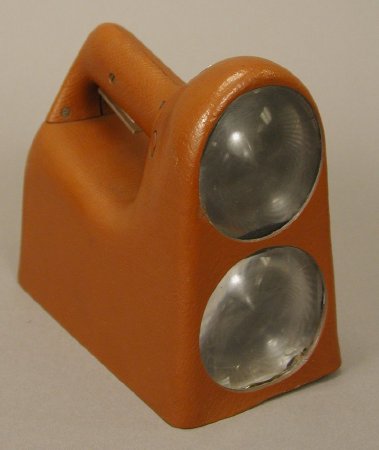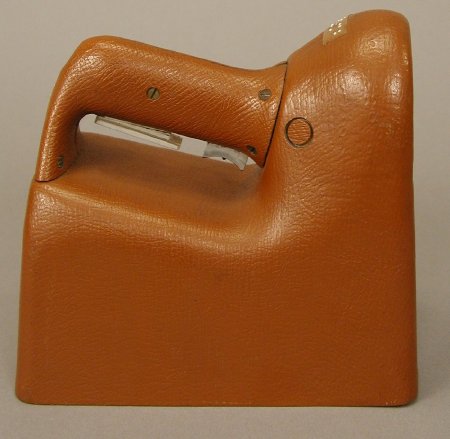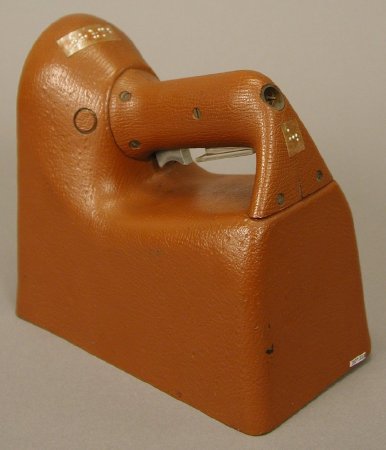Object ID:
2007.33.8
Title:
G-5 Obstacle Detector
Description:
Orange painted faux leather Bakelite case, tote handle screwed to top behind lens housing, clear plastic spring loaded actuator level and aluminum "stimulator" with vibrating needle underneath handle; two round fresnel lenses on front of case; push button range buttons to either side of handle; charging jack on back of handle; aluminum base plate with label, "Model G5 Serial No. 7/Bionic Instruments, Inc./formerly Biophysical Instruments, Inc./Philadelphia, Pa."; clear braille labels at charging jack, "#1" and on top front, "thumb".
Dimensions:
H-6.875 W-4.125 D-7.5 inches
Date:
ca. 1954
Made by:
Bionic Instruments, Inc.; Benham, Thomas A.
Place of Origin:
Philadelphia, PA
Provenance:
Blind since boyhood, Thomas A. Benham earned his doctorate in electrical engineering from Penn and taught physics and math at Haverford College until he retired in 1976. In 1950, he began working under contract with the Veterans Administration to evaluate the Signal Corps Obstacle Detector. In 1953, Haverford subcontracted further investigations to Biophyscal, Instruments, Inc., whose lead investigator, Malvern Benjamin, worked with Benham to develop three different protype obstacle detectors based upon the same principles as the Signal Corps model, the G-4, G-5, and Flashlight Obstacle Detectors. All three used reflected light to detect obstacles/objects in the direction ahead of the user. The G-5 was the only model which approached a production phase, made in small quantities for the V.A.
Credit Line:
Gift of Association for Education and Rehabilitation of the Blind and Visually Impaired


